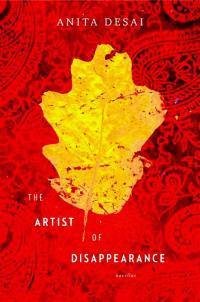The Artist of Disappearance by Anita Desai
 Tuesday, December 6, 2011 at 11:00PM
Tuesday, December 6, 2011 at 11:00PM 
First published in Great Britain in 2011; published by Houghton Mifflin Harcourt on December 6, 2011
The Artist of Disappearance consists of three long stories (billed as novellas). Stories of this length deserve to be reviewed independently.
A young civil servant in training, stuck in the backwaters of India, must decide how to respond to a request for government support to preserve a private museum and its surprising collection of treasures. Later in life, the man is occasionally troubled by self-doubt for reasons that the reader must intuit. Apart from my appreciation of Anita Desai’s writing style, nothing about this story grabbed me. “The Museum of Final Journeys” is my least favorite of the three.
In “Translator Translated,” a woman searches for her roots by relearning her childhood language and visiting the remote region where it is still spoken. The lyrical work of a provincial writer inspires her to translate the text, but she finds its eventual publication to be less than the transformative experience she had imagined. When the writer sends the translator a disappointing novel, the story explores the role of the translator: should she be faithful to the original text or should she try to improve it, essentially becoming a co-author? This is the best of the three stories.
“The Artist of Disappearance” starts as the story of a quiet life -- too quiet to be gripping. Ravi, an adopted boy, raised to be rarely seen and never heard, becomes a reclusive adult, more comfortable in the wilderness than in the company of people. The story gains energy when documentary makers, searching for environmental degradation, stumble upon the landscape art that Ravi has devoted himself to creating, a garden that has blossomed out of devastation. But will Ravi’s work be desecrated if outsiders are permitted to gaze upon it? The weak opening and a mediocre ending bracket excellent storytelling in the middle.
Anita Desai is unquestionably a fine writer. She writes earnestly of people and their pain. She paints characters with astonishing clarity. For the most part, I admire her writing style, although I think she occasionally tries too hard to be eloquent, forcing words into contexts where they didn’t quite fit, sometimes indulging herself with unnecessary adverbs. On the whole, however, her prose is a pleasure to read.
RECOMMENDED
Reader Comments